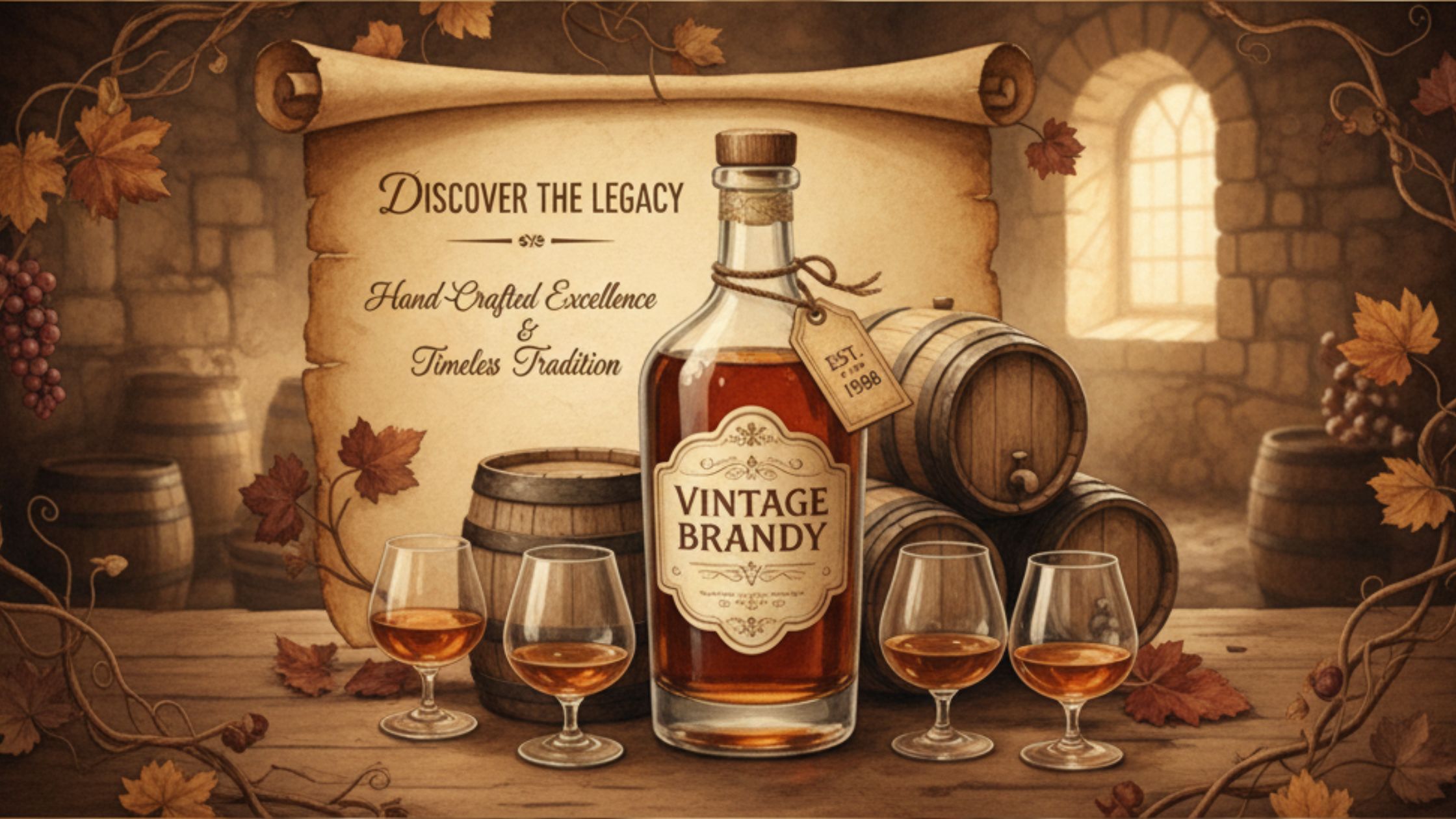Best Liquor Under ₹10,000 for a Perfect New Year 2026 Party
2025-12-05


Brandy is one of the oldest forms of distilled spirits, with centuries of tradition in Europe's regions for wine growing. At its most basic level, brandy is aged distilled wine. It takes grapes (sometimes other fruits) and transforms them from wine into a spirit that possesses warmth, richness, and a deep sense of place. A distilled form of this broad category of aged spirits exists known as vintage brandy, which has even more limited scope.
Unlike regular brandy, typically a blend of multiple harvests to ensure consistency across bottles, vintage brandy is uniquely tied to a single harvest and is matured with very little handling. So, each vintage release is a moment in time, telling the story of the grapes harvested that year (the climate, the terroir, and the choices made by the distiller).
In this article, we will discuss what makes vintage brandy, how vintage brandy differs from regular brandy, how vintage brandy and brandies in general are aged and regulated, and why vintages are valued by collectors and wine devotees alike.
At its simplest, vintage brandy is a spirit that is distilled from wine made in a specific harvest year and aged in oak casks for a long time, sometimes up to several decades, until it is bottled.
The defining feature is that it is from a specific year. Vintage brandy is like vintage wine—both reflect the growing conditions of that particular year. Rainfall, sunshine, grape ripeness, and even the variations in regional weather extremes are all represented in the spirit.
Because of this long, unblended journey, each vintage bottle is more than just a drink—it’s a historical record in liquid form.
The distinction between vintage and regular brandy lies in philosophy as much as production.
|
Aspect |
Vintage Brandy |
Regular Brandy |
|
Harvest Source |
Single year (vintage) |
Blends from multiple years |
|
Aging Method |
Cask-aged, often untouched until bottling |
Blended and adjusted for consistency |
|
Flavor Profile |
Unique to its vintage/year |
Predictable, house-style |
|
Collectibility |
Rare, limited, tied to a harvest |
Common, widely available |
|
Price Range |
Generally higher |
Varies from budget to luxury |
Aging is the defining stage in creating vintage brandy. The spirit rests in oak casks, undergoing chemical and sensory transformations:
Unlike standard brandy, which may be periodically transferred or blended, vintage brandy is often left untouched in a single cask.
In some regions (like Cognac), vintage bottlings require strict record-keeping and official seals to guarantee authenticity.
Just as vintage wines fascinate collectors, vintage brandy freezes the uniqueness of a harvest year.
Extended aging leads to layered flavors—dried fruits, caramelized nuts, leather, tobacco, chocolate, and exotic spices.
Each vintage is a narrative: drought years taste different from abundant harvests. Buying vintage is as much about owning history as enjoying a drink.
With limited release numbers, older vintages often appreciate in value, making them collectibles for both drinkers and investors.
Also Read: VSOP Brandy: Meaning, History, and Why It Matters
Though Cognac is best known for blending (e.g., VS, VSOP, XO), some houses like Hine and Delamain release rare vintage expressions. These are tightly regulated and highly prized.
Armagnac has embraced the vintage concept more than Cognac. Houses like Darroze and Château de Laubade release vintages dating back many decades, often celebrated for their rustic depth.
While most Spanish brandy is solera-aged (continuous blending), some producers experiment with single-vintage editions, often highlighting exceptional harvest years.
Produced from the Parellada grape, these vintages emphasize terroir, mountain-grown acidity, and Mediterranean influence—showcasing brandy’s regional diversity.
Tasting vintage brandy is like exploring history through flavor. Expect:
Unlike regular brandy, vintage expressions rarely taste alike. Each year is singular.
To preserve quality, treat vintage brandy like fine wine or whisky:
Vintage brandy sits at a point of intersection between agriculture, craftsmanship, and history. Each bottle contains both a spirit and a story—storing memories with single harvests distilled and aged for decades.
While regular brandy provides an inherent level of consistency and accessibility, vintage brandy contains uniqueness, depth, and rarity. It is not just about sipping on a fine spirit, vintage brandy is akin to experiencing history in its purest distilled form, through the lens of place, time, and tradition.
To the aficionado, collector, and even the simply curious drinker alike, vintage brandy is more than an indulgence; it is a journey of tasting history.
Also Read: Hendrick’s Gin Brings Oasium to India: A Citrus-Forward Limited Edition That Redefines Freshness